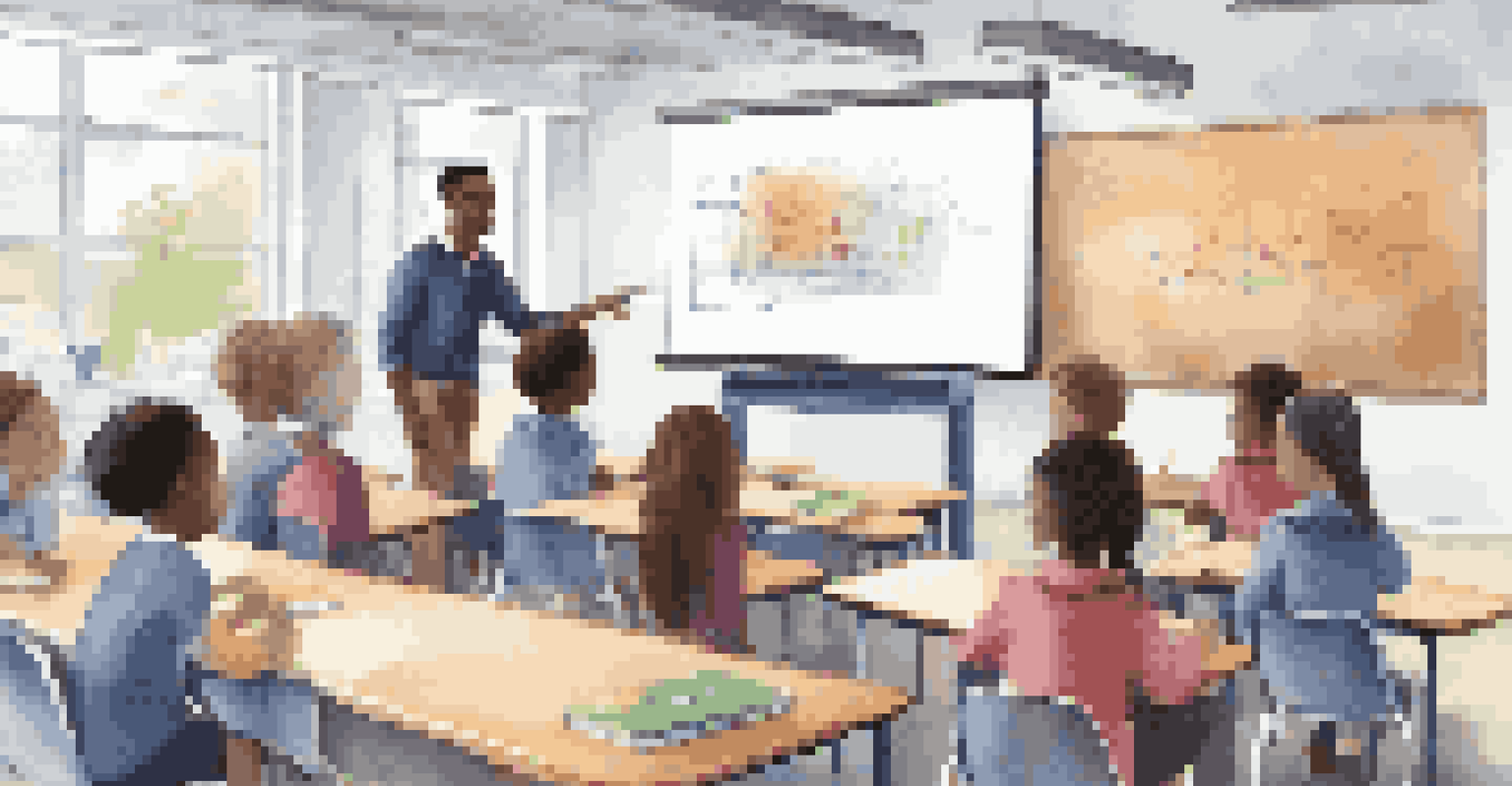The Connection Between Social Media and Student Engagement Levels

Understanding Student Engagement in the Digital Age
Student engagement refers to the level of interest, motivation, and involvement that students show in their learning. In a world where technology is ubiquitous, understanding this engagement becomes crucial for educators. The rise of digital communication tools, particularly social media, has profoundly changed how students interact with their peers and educational content.
Technology is best when it brings people together.
Social media platforms like Instagram, Twitter, and Facebook serve as vital channels for students to connect and share information. They foster a sense of community, which can enhance motivation and participation in academic activities. By engaging with their peers online, students often feel more inclined to express their thoughts and contribute to discussions.
However, while social media can boost engagement, it also presents challenges. Distractions and negative interactions can detract from the focus needed for effective learning. Thus, it’s essential to strike a balance between utilizing these platforms for learning and managing their potential downsides.
The Positive Impact of Social Media on Engagement
One of the most significant benefits of social media is its ability to create a sense of belonging among students. When students engage in online discussions about class topics, they often feel more connected to their peers and instructors. This sense of community can lead to increased participation in both online and offline settings.

Additionally, social media enables interactive learning experiences. For instance, educators can use platforms like Twitter to host Q&A sessions or create hashtag discussions around specific topics. These interactive elements can make learning more dynamic and enjoyable, motivating students to engage more deeply with the material.
Social Media Enhances Learning
Platforms like Twitter and Facebook create opportunities for interactive and collaborative learning experiences.
Moreover, social media can facilitate collaborative projects among students. Tools like Google Docs shared through social media channels allow for seamless group work, encouraging students to contribute ideas and feedback in real-time. This collaborative approach not only enhances engagement but also promotes teamwork skills essential for future careers.
Challenges of Social Media in Educational Settings
Despite its advantages, social media also poses challenges that can hinder student engagement. One major concern is the potential for distractions. Students may find themselves scrolling through feeds instead of focusing on class materials, leading to divided attention and lower retention of information.
The great thing about social media was how it gave a voice to voiceless people.
Additionally, negative interactions, such as cyberbullying or social comparison, can significantly impact student well-being and engagement levels. When students experience negativity online, they may withdraw from participation, both in social media and in their academic pursuits. This withdrawal can create a vicious cycle, further decreasing engagement.
Educators must recognize these challenges and create strategies to mitigate them. By fostering a positive online environment and promoting responsible social media use, schools can help students harness the benefits while minimizing the risks associated with these platforms.
Social Media as a Tool for Enhanced Learning
Educators increasingly see social media as a powerful tool for enhancing the learning experience. For example, creating dedicated class groups on platforms like Facebook can provide a space for students to ask questions and share resources. This accessibility can lead to deeper understanding and engagement with the coursework.
Moreover, social media allows for the sharing of diverse perspectives. Students can follow thought leaders and access a wealth of information beyond their textbooks. This exposure to different viewpoints can inspire critical thinking and enrich classroom discussions, ultimately boosting engagement.
Challenges of Distraction
While social media can boost engagement, it also poses risks of distraction and negative interactions that can hinder focus.
Incorporating social media into lesson plans can also cater to various learning styles. Visual learners, for example, may thrive on platforms like Instagram, where they can engage with infographics and videos. By leveraging these tools, educators can create more inclusive and engaging learning environments.
The Role of Educators in Guiding Social Media Use
Teachers play a crucial role in guiding how students use social media for educational purposes. By establishing clear expectations and creating structured activities, educators can help students navigate these platforms effectively. This guidance can empower students to use social media as a productive learning tool rather than a source of distraction.
Professional development for educators is also essential. Training sessions can equip teachers with innovative strategies to integrate social media into their curricula. This can help them feel more comfortable using these tools and inspire them to create engaging, interactive lessons that resonate with their students.
Furthermore, educators can encourage students to reflect on their social media habits. Discussions about responsible use and the impact of online interactions can foster a culture of mindfulness. This reflection can lead to increased awareness of how social media influences their engagement in both positive and negative ways.
Success Stories of Social Media in Education
Many educators have successfully integrated social media into their classrooms, leading to increased student engagement. For instance, some teachers have used Twitter to create virtual classrooms where students can share insights and ask questions outside of traditional hours. This flexibility allows for continuous engagement with the material.
Case studies have shown that schools using platforms like Instagram to showcase student projects have seen higher levels of pride and participation among students. When students know their work will be shared and celebrated publicly, they are often more motivated to put forth their best efforts.
Educators Guide Responsible Use
Teachers play a vital role in helping students navigate social media effectively for educational purposes while promoting mindfulness.
These success stories highlight the potential of social media as a catalyst for engagement. By sharing these examples, educators can inspire others to explore innovative ways to incorporate these platforms into their teaching practices.
The Future of Social Media and Student Engagement
As technology continues to evolve, the role of social media in education is likely to expand. New platforms and tools will emerge, offering even more opportunities for enhancing student engagement. Educators must remain adaptable, continually exploring how these innovations can be leveraged for the benefit of their students.
The ongoing dialogue about the impact of social media on mental health and learning will also shape its future in education. Striking a balance between engagement and well-being will become increasingly critical. Educators, students, and parents will need to work together to ensure that social media serves as a positive force.

Ultimately, the connection between social media and student engagement will depend on how we choose to navigate this landscape. By prioritizing thoughtful integration and mindful use, we can harness the power of social media to foster a more engaged and connected learning environment.